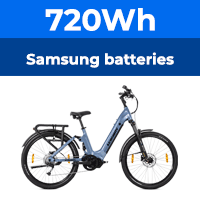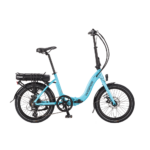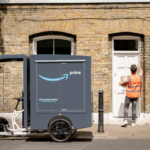Advantages and disadvantagesThe LiFePO4 battery uses a lithium-ion-derived chemistry and shares many of its advantages and disadvantages with other lithium ion battery chemistries.
However, one key advantage over other lithium-ion batteries is the superior thermal and chemical stability, which provides better safety characteristics than lithium-ion batteries with other cathode materials.[6] Due to significantly stronger bonds between the oxygen atoms in the phosphate (compared to the cobalt), oxygen is not readily released, and as a result, lithium iron phosphate cells are virtually incombustible in the event of mishandling during charge or discharge, and can handle high temperatures without decomposing.[6]
Lithium Iron Phosphate chemistry also offers a longer cycle life over standard lithium ion cells.[6]
The use of phosphates also reduces the cost and environmental concerns of Cobalt cells, particularly in regards of cobalt entering the environment through improper disposal,[6] with considerably increased safety over the cobalt chemistry type of lithium battery cell, particularly when compared to LiPo battery cells commonly used in the aeromodeling hobby.
One of the other major advantages for LiFePO4 when compared with LiCoO2 is higher current or peak-power rating.[7]
LFP batteries have some drawbacks:
The energy density (energy/volume) of a new LFP battery is somewhat lower than that of a new LiCoO2 battery. (14% reduction in energy density) Battery manufacturers across the world are currently working to find ways to maximize the energy storage performance and reduce size & weight.[8]
Many brands of LFPs have a low discharge rate compared with lead-acid or LiCoO2. Since discharge rate is a percentage of battery capacity this can be overcome by using a larger battery (more ampère-hours). However, A123Systems claims 100C pulse discharge rate.[9]
While LiFePO4 cells have lower voltage and energy density than LiCoO2 Li-ion cells, this disadvantage is offset over time by the slower rate of capacity loss (aka greater calendar-life) of LiFePO4 when compared with other lithium-ion battery chemistries (such as LiCoO2 cobalt or LiMn2O4 manganese spinel based lithium-ion polymer batteries or lithium-ion batteries).[10][11] For example:
After one year on the shelf, a LiFePO4 cell typically has approximately the same energy density as a LiCoO2 Li-ion cell.
Beyond one year on the shelf, a LiFePO4 cell is likely to have higher energy density than a LiCoO2 Li-ion cell due to the differences in their respective calendar-lives.
[edit] SpecificationsCell voltage = min. discharge voltage = 2.8 V. Working voltage = 3.0 V – 3.3 V. Max. charge voltage = 3.6 V.
Volumetric energy density = 220 Wh/dm3 (790 kJ/dm3)
Gravimetric energy density = >90 Wh/kg[12] (>320 J/g)
100% DOD cycle life (number of cycles to 80% of original capacity) = 2,000–7,000[13]
Cathode composition (weight)
90% C-LiFePO4, grade Phos-Dev-12
5% Carbon EBN[disambiguation needed ]-10-10 (superior graphite)
5% PVDF
Cell Configuration
Carbon-coated aluminum current collector 15
1.54 cm2 cathode
Electrolyte: EC-DMC 1-1 LiClO4 1M
Anode: Metallic lithium
Experimental conditions:
Room temperature
Voltage limits: 2.0 – 3.65 V
Charge: Up to C/1 rate up to 3.6 V, then constant voltage at 3.6 V until I < C/24
[edit] SafetyLiFePO4 is an intrinsically safer cathode material than LiCoO2 and manganese spinel. The Fe-P-O bond is stronger than the Co-O bond, so that when abused, (short-circuited, overheated, etc.) the oxygen atoms are much harder to remove. This stabilization of the redox energies also helps fast ion migration.[citation needed]
As lithium migrates out of the cathode in a LiCoO2 cell, the CoO2 undergoes non-linear expansion that affects the structural integrity of the cell. The fully lithiated and unlithiated states of LiFePO4 are structurally similar which means that LiFePO4 cells are more structurally stable than LiCoO2 cells.[citation needed]
No lithium remains in the cathode of a fully charged LiFePO4 cell—in a LiCoO2 cell, approximately 50% remains in the cathode. LiFePO4 is highly resilient during oxygen loss, which typically results in an exothermic reaction in other lithium cells.[4]
[edit] UsageLFP batteries were featured on the November 5, 2008 episode of Prototype This!. They were used as the power source for a hexapod (walking) vehicle. Lithium Technology Corp. announced in May 2007, that they had developed a new Lithium Iron Phosphate battery with cells large enough for use in hybrid cars, claiming they are "the largest cells of their kind in the world.".[14] While they may be large enough for such uses, there remain limitations to the use of this particular Lithium battery technology which may make their use contraindicated. See Advantage and Disadvantages above for details.
This battery is used in the electric cars made by Aptera[15] and QUICC.[16]
Killacycle, the worlds fastest electric motorcycle, uses lithium iron phosphate batteries.[17]
Roehr Motorcycle Company, uses a 5.8 kW·h capacity LFP battery pack to power its supersport electric motorcycle.[citation needed]
This type of battery technology is used on the One Laptop per Child (OLPC) project.[18] OLPC batteries are manufactured by BYD Company of Shenzhen, China, the world's largest producer of Li-ion batteries. BYD, also a car manufacturer, plans to use its Lithium Iron Phosphate batteries to power its PHEV, the F3DM and F6DM (Dual Mode), which will be the first commercial dual-mode electric car in the world. It plans to mass produce the cars in 2009.[19]
One Laptop per Child uses LiFePO4 batteries in its XO laptops because they contain no toxic heavy metals in compliance with the European Union's Restriction of Hazardous Substances Directive. [20]
LFP batteries are gaining popularity now in the world of hobby-grade R/C, due to the benefits over the ever-popular LiPo batteries. They can be recharged much faster and for more cycles, are not prone to catching fire or exploding while recharging, and are more robust than the LiPo type.
LFP batteries are used by electric vehicles manufacturer Smith Electric Vehicles to power its products.[citation needed]
Used by Minneapolis Electric Bike and Chicago Electric Bicycles.[citation needed]
Some electronic cigarette modifications also use these types of batteries.[citation needed]
[edit] See also
However, one key advantage over other lithium-ion batteries is the superior thermal and chemical stability, which provides better safety characteristics than lithium-ion batteries with other cathode materials.[6] Due to significantly stronger bonds between the oxygen atoms in the phosphate (compared to the cobalt), oxygen is not readily released, and as a result, lithium iron phosphate cells are virtually incombustible in the event of mishandling during charge or discharge, and can handle high temperatures without decomposing.[6]
Lithium Iron Phosphate chemistry also offers a longer cycle life over standard lithium ion cells.[6]
The use of phosphates also reduces the cost and environmental concerns of Cobalt cells, particularly in regards of cobalt entering the environment through improper disposal,[6] with considerably increased safety over the cobalt chemistry type of lithium battery cell, particularly when compared to LiPo battery cells commonly used in the aeromodeling hobby.
One of the other major advantages for LiFePO4 when compared with LiCoO2 is higher current or peak-power rating.[7]
LFP batteries have some drawbacks:
The energy density (energy/volume) of a new LFP battery is somewhat lower than that of a new LiCoO2 battery. (14% reduction in energy density) Battery manufacturers across the world are currently working to find ways to maximize the energy storage performance and reduce size & weight.[8]
Many brands of LFPs have a low discharge rate compared with lead-acid or LiCoO2. Since discharge rate is a percentage of battery capacity this can be overcome by using a larger battery (more ampère-hours). However, A123Systems claims 100C pulse discharge rate.[9]
While LiFePO4 cells have lower voltage and energy density than LiCoO2 Li-ion cells, this disadvantage is offset over time by the slower rate of capacity loss (aka greater calendar-life) of LiFePO4 when compared with other lithium-ion battery chemistries (such as LiCoO2 cobalt or LiMn2O4 manganese spinel based lithium-ion polymer batteries or lithium-ion batteries).[10][11] For example:
After one year on the shelf, a LiFePO4 cell typically has approximately the same energy density as a LiCoO2 Li-ion cell.
Beyond one year on the shelf, a LiFePO4 cell is likely to have higher energy density than a LiCoO2 Li-ion cell due to the differences in their respective calendar-lives.
[edit] SpecificationsCell voltage = min. discharge voltage = 2.8 V. Working voltage = 3.0 V – 3.3 V. Max. charge voltage = 3.6 V.
Volumetric energy density = 220 Wh/dm3 (790 kJ/dm3)
Gravimetric energy density = >90 Wh/kg[12] (>320 J/g)
100% DOD cycle life (number of cycles to 80% of original capacity) = 2,000–7,000[13]
Cathode composition (weight)
90% C-LiFePO4, grade Phos-Dev-12
5% Carbon EBN[disambiguation needed ]-10-10 (superior graphite)
5% PVDF
Cell Configuration
Carbon-coated aluminum current collector 15
1.54 cm2 cathode
Electrolyte: EC-DMC 1-1 LiClO4 1M
Anode: Metallic lithium
Experimental conditions:
Room temperature
Voltage limits: 2.0 – 3.65 V
Charge: Up to C/1 rate up to 3.6 V, then constant voltage at 3.6 V until I < C/24
[edit] SafetyLiFePO4 is an intrinsically safer cathode material than LiCoO2 and manganese spinel. The Fe-P-O bond is stronger than the Co-O bond, so that when abused, (short-circuited, overheated, etc.) the oxygen atoms are much harder to remove. This stabilization of the redox energies also helps fast ion migration.[citation needed]
As lithium migrates out of the cathode in a LiCoO2 cell, the CoO2 undergoes non-linear expansion that affects the structural integrity of the cell. The fully lithiated and unlithiated states of LiFePO4 are structurally similar which means that LiFePO4 cells are more structurally stable than LiCoO2 cells.[citation needed]
No lithium remains in the cathode of a fully charged LiFePO4 cell—in a LiCoO2 cell, approximately 50% remains in the cathode. LiFePO4 is highly resilient during oxygen loss, which typically results in an exothermic reaction in other lithium cells.[4]
[edit] UsageLFP batteries were featured on the November 5, 2008 episode of Prototype This!. They were used as the power source for a hexapod (walking) vehicle. Lithium Technology Corp. announced in May 2007, that they had developed a new Lithium Iron Phosphate battery with cells large enough for use in hybrid cars, claiming they are "the largest cells of their kind in the world.".[14] While they may be large enough for such uses, there remain limitations to the use of this particular Lithium battery technology which may make their use contraindicated. See Advantage and Disadvantages above for details.
This battery is used in the electric cars made by Aptera[15] and QUICC.[16]
Killacycle, the worlds fastest electric motorcycle, uses lithium iron phosphate batteries.[17]
Roehr Motorcycle Company, uses a 5.8 kW·h capacity LFP battery pack to power its supersport electric motorcycle.[citation needed]
This type of battery technology is used on the One Laptop per Child (OLPC) project.[18] OLPC batteries are manufactured by BYD Company of Shenzhen, China, the world's largest producer of Li-ion batteries. BYD, also a car manufacturer, plans to use its Lithium Iron Phosphate batteries to power its PHEV, the F3DM and F6DM (Dual Mode), which will be the first commercial dual-mode electric car in the world. It plans to mass produce the cars in 2009.[19]
One Laptop per Child uses LiFePO4 batteries in its XO laptops because they contain no toxic heavy metals in compliance with the European Union's Restriction of Hazardous Substances Directive. [20]
LFP batteries are gaining popularity now in the world of hobby-grade R/C, due to the benefits over the ever-popular LiPo batteries. They can be recharged much faster and for more cycles, are not prone to catching fire or exploding while recharging, and are more robust than the LiPo type.
LFP batteries are used by electric vehicles manufacturer Smith Electric Vehicles to power its products.[citation needed]
Used by Minneapolis Electric Bike and Chicago Electric Bicycles.[citation needed]
Some electronic cigarette modifications also use these types of batteries.[citation needed]
[edit] See also







